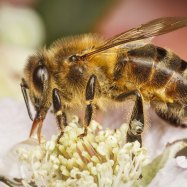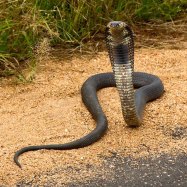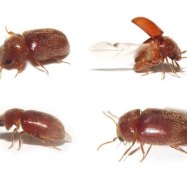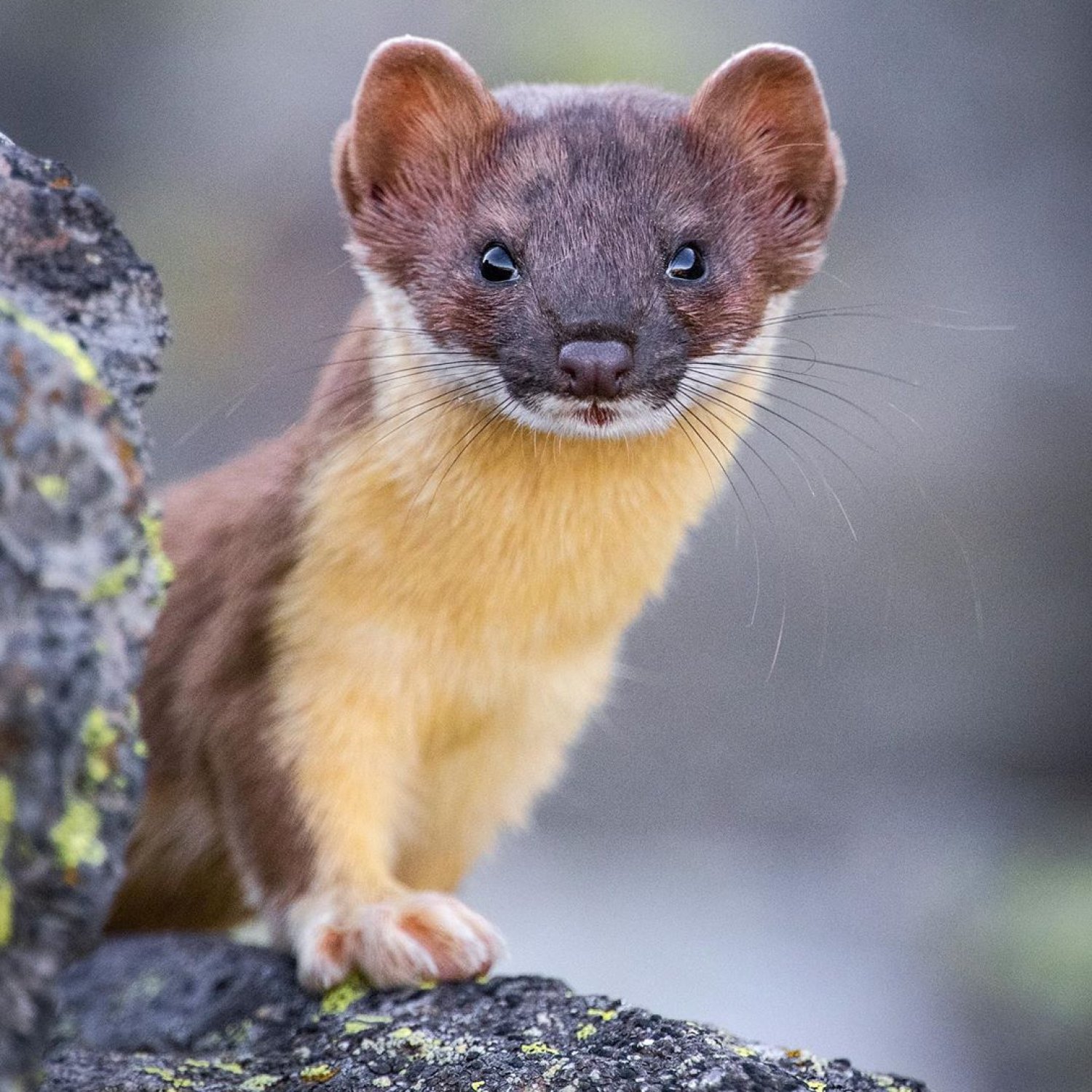
Weasel
15 to 45 cm (5.9 to 17.7 inches)
The weasel, found globally, is a mustelid with a slender and elongated body, short limbs, and a sharp pointed snout. Ranging from 15 to 45 cm, they are skilled hunters and are known for their quick and agile movements. These fascinating creatures can be found in various habitats and are essential to maintaining a healthy ecosystem.
Animal Details Summary:
Common Name: Weasel
Kingdom: Animalia
Habitat: Woodlands, grasslands, wetlands, and mountains
The Mischievous Weasel: All You Need to Know About this Elusive Carnivore
Weasels, scientifically known as Mustela, are small but fierce mammals that belong to the Mustelidae family. Despite their small size, they have a reputation for being cunning hunters and sneaky predators. Found in different parts of the world, the weasel is an animal that is shrouded in mystery and often misunderstood. In this article, we will explore the fascinating world of the weasel and uncover its unique features, behaviors, and habitats Weasel.The Weasel's Family Tree
Before delving into the world of weasels, it is essential to understand their taxonomy. Weasels belong to the Animalia kingdom, the Chordata phylum, and the Mammalia class. They are part of the Carnivora order, meaning they are carnivorous animals, and they are relatives of other well-known predators like bears, wolves, and otters. The Mustelidae family is widespread, with over 70 species, including ferrets, polecats, and badgers.The Elusive Weasel
With their slinky and agile bodies, weasels are masters of stealth and are notoriously elusive creatures. They are found globally, except for Antarctica and Australia, making them one of the most widespread land mammals. They are known to inhabit a wide range of habitats, including woodlands, grasslands, wetlands, and mountains, making them adaptable to different environments. However, they are usually found in areas rich in prey, such as rodents, birds, and insects.Diet and Feeding Habits
Weasels are carnivorous animals, meaning they feed exclusively on meat Walrus. These tiny predators have a high metabolism, and they need to consume food constantly to survive. They are opportunistic hunters and are known for their cunning and persistence. Weasels are skilled at hunting smaller prey, and they can take down animals larger than themselves with their sharp teeth and claws. They are also known for their ability to enter small burrows to catch their prey, which makes them formidable hunters.Appearance and Physical Characteristics
The physical characteristics of weasels vary depending on the species, but they share some common features. They have slender and elongated bodies with short legs and a long tail, giving them a snake-like appearance. Their fur is usually brown or reddish-brown, with white or yellowish underparts. This coloring helps them blend into their surroundings and makes them hard to spot by predators or prey. They also have distinctive facial features, including a pointed snout, small round ears, and sharp, piercing eyes.Size Matters
Weasels come in different sizes, depending on the species. On average, they are 15 to 45 cm (5.9 to 17.7 inches) in length, with males being larger than females. The largest species is the African striped weasel, which can reach up to 40 cm, while the smallest is the least weasel, which can be as small as 15 cm. Despite their size, weasels are fierce predators and can take down prey much larger than themselves.Weasels in the Wild
Weasels are solitary animals and do not typically form groups or packs like other carnivores. They are nocturnal creatures, meaning they are most active at night, hunting and patrolling their territories. When not hunting, they spend their time sleeping in burrows or abandoned dens of other animals. They are also known for their playful nature and are often seen chasing each other or playing with objects, such as balls or sticks.Life in the Fast Lane
Weasels are highly adaptable and have a fast reproductive rate, which helps their species thrive. Female weasels reach sexual maturity at around 3 months, and they can have multiple litters in a year, with each litter containing around 5 to 6 kits. The kits are born blind, hairless, and helpless, and they rely on their mothers for survival. However, they grow quickly, and within a few weeks, they are ready to begin hunting with their mothers.The Weasel's Impact on the Ecosystem
Weasels are an essential part of the ecosystem, and their presence has a significant impact on the environment. As predators, they help control the population of rodents and other small animals, preventing them from overpopulating and damaging the ecosystem. They also play a crucial role in the food chain, with larger predators depending on them for food. They are essential in maintaining a balance in the food web and ensuring the survival of other species.The Weasel's Defense Mechanisms
Despite their small size, weasels are formidable predators, and they have evolved various defense mechanisms to protect themselves from predators. They are known for their agility and speed, which helps them escape from larger predators. They also have a keen sense of smell and hearing, allowing them to sense danger from a distance. Weasels are also equipped with sharp claws and teeth, which they use for defense and hunting.Weasels in Agriculture
Weasels are often viewed as pests by farmers, as they can enter chicken coops and kill poultry. They are also known to damage crops and steal eggs from bird nests. However, weasels play an essential role in agriculture by controlling the population of rodents, which are major pests in farms. As such, farmers should find ways to coexist with weasels instead of viewing them as a threat.Conservation Status and Threats
Sadly, some species of weasels are facing conservation issues due to habitat loss, climate change, and hunting. The long-tailed weasel and the African striped weasel are both listed as least concern, while the Japanese weasel is classified as endangered. It is essential to take measures to protect these small but vital creatures to ensure their survival and maintain a balance in the ecosystem.Conclusion
In conclusion, weasels are fascinating creatures that have adapted to survive in various habitats worldwide. Despite their small size, they are fierce predators, and they play a crucial role in maintaining the balance of the ecosystem. They may be elusive, but they are an essential part of the animal kingdom, and we should strive to protect and appreciate these mystical creatures. With their cunning and agility, weasels truly live up to their reputation as mischievous animals, and they will continue to surprise and captivate us with their unique characteristics.

Weasel
Animal Details Weasel - Scientific Name: Mustela
- Category: Animals W
- Scientific Name: Mustela
- Common Name: Weasel
- Kingdom: Animalia
- Phylum: Chordata
- Class: Mammalia
- Order: Carnivora
- Family: Mustelidae
- Habitat: Woodlands, grasslands, wetlands, and mountains
- Feeding Method: Carnivorous
- Geographical Distribution: Found worldwide, except for Antarctica and Australia
- Country of Origin: N/A
- Location: Global
- Animal Coloration: Varies depending on the species, but generally brown or reddish-brown with white or yellowish underparts
- Body Shape: Slender and elongated body with short limbs
- Length: 15 to 45 cm (5.9 to 17.7 inches)
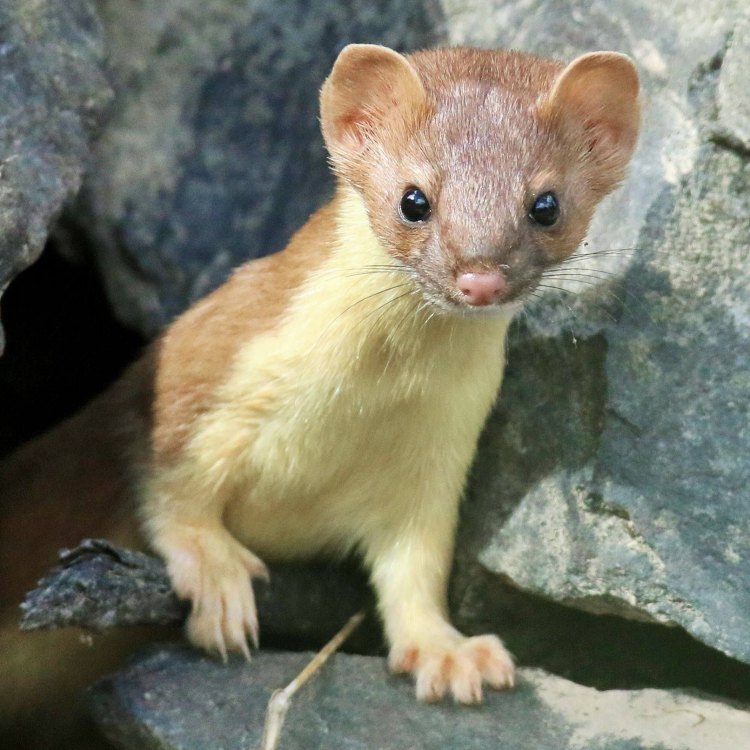
Weasel
- Adult Size: Small to medium-sized
- Average Lifespan: 2 to 5 years
- Reproduction: Sexual
- Reproductive Behavior: Mating season varies depending on the species; females give birth to litters of 2 to 10 kits
- Sound or Call: Produce a variety of vocalizations, including screeches, chatters, and hisses
- Migration Pattern: Some species migrate short distances during winter
- Social Groups: Solitary
- Behavior: Agile and excellent climbers; known for their predatory skills
- Threats: Habitat loss, hunting, and competition with other predators
- Conservation Status: Varies depending on the species; some are of least concern while others are endangered or vulnerable
- Impact on Ecosystem: Play an important role in controlling rodent populations
- Human Use: Hunted for fur in the past, but currently protected in many regions
- Distinctive Features: Long and slender body, short limbs, and sharp claws
- Interesting Facts: Weasels have excellent vision and hearing, and they are known for their ability to squeeze through small openings
- Predator: Various predators, including larger mammals and birds of prey
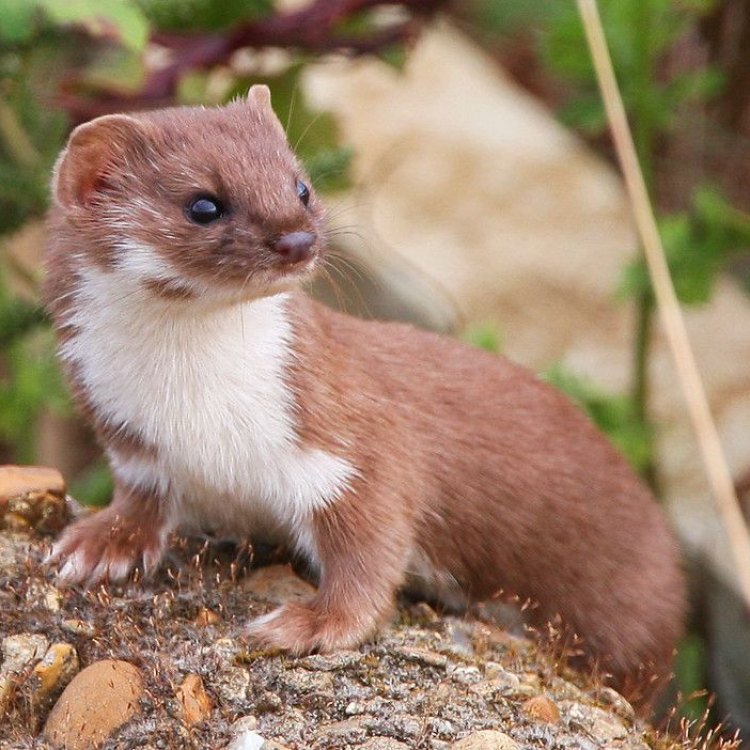
Mustela
The Mighty Small Hunter: The Fascinating World of Weasels
When thinking of predators, we often imagine powerful and intimidating animals like lions and tigers. However, there is a group of predators that may not be as well-known, but they are just as fascinating and skilled at hunting: weasels. These small carnivorous mammals have captured the attention of many for their agility, cunning techniques, and unique characteristics. In this article, we will take a closer look at these mighty small hunters and discover what makes them so special PeaceOfAnimals.Com.Small in size but big in impact, weasels belong to the Mustelidae family, which also includes ferrets, otters, and badgers. They are found all over the world, with some species living in almost every habitat, ranging from arctic tundras to dense forests and even grasslands. In this diverse family, weasels hold a special place, boasting a fascinating set of traits that sets them apart from their relatives.
A Weasel's Physical Characteristics and Behavior
Weasels are generally small to medium-sized animals, with the smallest species measuring only 8 inches long and the largest reaching up to 30 inches in length. They have long, slender bodies with short legs and sharp, curved claws, making them excellent climbers. These small athletes are known for their agility, able to move swiftly and gracefully through even the thickest of brush.One of the most distinctive features of a weasel is its long and sinuous body. This allows them to navigate through narrow tunnels and burrows in search of prey. They also have a short, bushy tail, usually around a third of their body length, which helps them balance while climbing and running West Highland Terrier.
Weasels have a brown, chestnut, or black coat with a cream-colored belly, but their fur may change color depending on the season and their environment. This is referred to as "moulting," and it allows them to blend in with their surroundings and avoid predators. In colder regions, the coat becomes thicker and lighter in color during the winter, providing better insulation against the cold.
These hunters are solitary creatures, preferring to live and hunt alone. However, they may interact with other weasels during mating season, which varies depending on the species. For some, it may occur in the summer, while for others, it may be in early spring. Female weasels give birth to litters of 2 to 10 kits, which they raise on their own.
The Unique Reproductive Behavior of Weasels
Unlike many other mammals, weasels reproduce through sexual means. Males and females come together during mating season, and after a successful mating, the male may leave, and the female will raise the kits on her own. This remarkable reproductive behavior is a result of the solitary nature of weasels, with individuals preferring to live and hunt on their own.During the breeding season, male weasels may engage in fierce and sometimes deadly battles with other males, competing for the right to mate with a female. Once a mate is selected, the fertilized eggs stay in a state of suspended development until the female's body senses the time is right for them to develop. This process is called "delayed implantation" and allows juvenile weasels to be born at the most advantageous time of the year.
The Versatile Vocalizations of Weasels
Weasels may be solitary hunters, but that doesn't mean they are entirely silent creatures. In fact, they are quite vocal and produce a variety of sounds and calls. These include screeches, chatters, hisses, and even a low, churring purr when content. Their vocalizations are used for many purposes, including communication, expressing distress, or as a warning to potential predators.The Fascinating World of Weasel Migration
While weasels are generally solitary creatures, some species do exhibit migratory behavior. In regions with harsh winters, weasels may migrate short distances to be closer to their preferred food sources. This behavior is common among long-tailed and stoat weasels, and they may travel as far as 19 miles in search of better feeding grounds. This ability to cover long distances in a short time showcases the weasels' impressive agility and endurance.The Hunt Begins: Weasels' Predatory Skills
Weasels are apex predators, meaning they are at the top of their food chain. Their small size and agility make them excellent at chasing down prey, with a success rate of over 50%. These fierce hunters feed on small mammals, such as voles, mice, shrews, and even birds, insects, and reptiles. Their diet is dependent on their location and the availability of prey.Weasels use their keen sense of vision and hearing to spot potential prey. They also have a heightened sense of smell, which they use to locate food buried under the ground or hidden in dense vegetation. Once a target is identified, weasels use their incredible speed and agility to chase, catch, and kill their prey with a quick bite to the neck. They have been observed taking down prey much larger than themselves, showcasing their impressive hunting abilities.
A Threatened Existence: The Struggles of Weasels in the Wild
Despite their impressive hunting skills, weasels face numerous threats in the wild, making their existence a constant struggle. One of the biggest threats to their survival is habitat loss. As human populations grow and expand, weasels lose their natural habitats, making it difficult for them to find suitable food sources and shelter.In addition to habitat loss, weasels are also hunted by humans for their fur. This was a significant threat in the past, leading to the decline of some species. However, many countries now have laws in place to protect these animals, and their populations are slowly recovering.
Weasels also face competition with other predators, such as foxes, coyotes, and even domestic cats, for food and shelter. These larger predators may also prey on weasels, putting a strain on their already fragile populations.
The Importance of Weasels in Ecosystems
Weasels may be small animals, but they play a crucial role in maintaining balance in their ecosystems. As efficient predators, they help control the population of rodents, which can cause significant damage to crops and spread diseases. In turn, this benefits other animals and plant species, helping to maintain a healthy and diverse ecosystem.The Fascinating World of Weasels: More Than Meets the Eye
In conclusion, weasels may be small creatures, but their unique characteristics and behavior make them a fascinating species. Their exceptional hunting abilities, solitary nature, and remarkable reproductive behavior have captured the attention of many, and they play a vital role in the ecosystems they inhabit. With the right conservation efforts and protection, we can ensure that these mighty small hunters continue to thrive and be an essential part of our natural world.
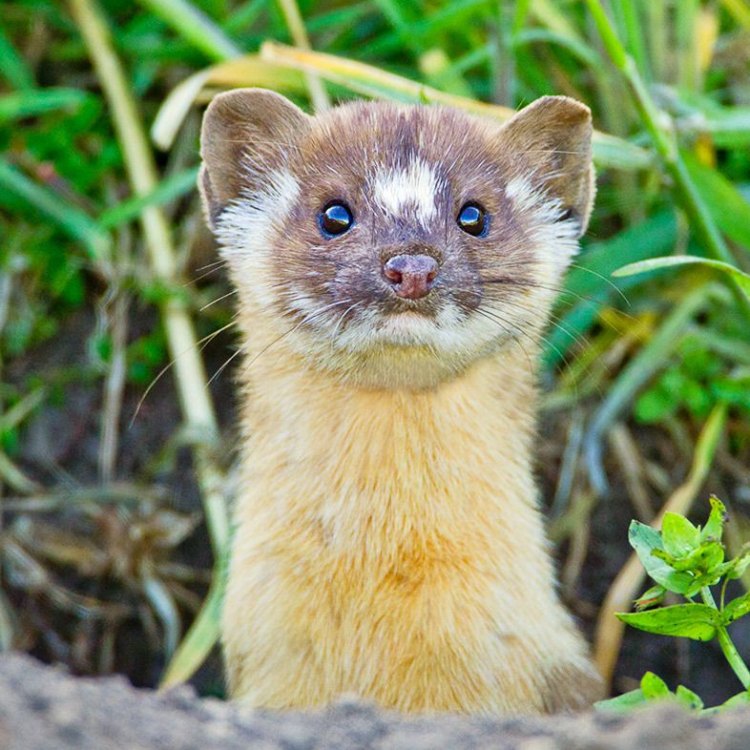
The Mischievous Weasel: All You Need to Know About this Elusive Carnivore
Disclaimer: The content provided is for informational purposes only. We cannot guarantee the accuracy of the information on this page 100%. All information provided here may change without prior notice.

